I am using the spline.poly function from here.
spline.poly
spline.poly <- function(xy, vertices, k=3, ...) {
# Assert: xy is an n by 2 matrix with n >= k.
# Wrap k vertices around each end.
n <- dim(xy)[1]
if (k >= 1) {
data <- rbind(xy[(n-k+1):n,], xy, xy[1:k, ])
} else {
data <- xy
}
# Spline the x and y coordinates.
data.spline <- spline(1:(n+2*k), data[,1], n=vertices, ...)
x <- data.spline$x
x1 <- data.spline$y
x2 <- spline(1:(n+2*k), data[,2], n=vertices, ...)$y
# Retain only the middle part.
cbind(x1, x2)[k < x & x <= n+k, ]
}
DATA
df = data.frame(A = c(1, 4, 5, 8, 10),
B = c(1, 3, 7, 9, 10),
C = c(2, 6, 8, 9, 10),
D = c(1, 3, 4, 7, 9),
E = c(1, 2, 3, 4, 5))
DRAW
#Calculate angles based on number of columns
angles = 0:(NCOL(df) - 1) * 2*pi/NCOL(df)
#Calculate x and y corresponding to each radial distance
toplot = lapply(1:NCOL(df), function(i){
data.frame(x = df[,i]*cos(angles[i]),
y = df[,i]*sin(angles[i]))
})
#Split toplot and merge back together the same rows
toplot2 = lapply(toplot, function(x) data.frame(x, ID = sequence(NROW(x))))
toplot2 = do.call(rbind, toplot2)
toplot2 = split(toplot2, toplot2$ID)
#Create empty plot
graphics.off()
plot(do.call(rbind, toplot), type = "n", axes = FALSE, ann = FALSE, asp = 1)
#Allow drawing outside the plot region just in case
par(xpd = TRUE)
#Draw polygons
lapply(toplot2, function(a){
polygon(spline.poly(xy = cbind(a$x, a$y), vertices = 100, k = 3))
})
#Draw points
lapply(toplot, function(a){
points(a)
})
#Draw radial lines
lapply(toplot, function(a){
lines(a)
})

AREA
area_data = lapply(toplot2, function(a){
spline.poly(xy = cbind(a$x, a$y), vertices = 100, k = 3)
})
library(geometry)
lapply(area_data, function(P) polyarea(P[,1], P[,2]))
#$`1`
#[1] 4.35568
#$`2`
#[1] 38.46985
#$`3`
#[1] 96.41331
#$`4`
#[1] 174.1584
#$`5`
#[1] 240.5837

